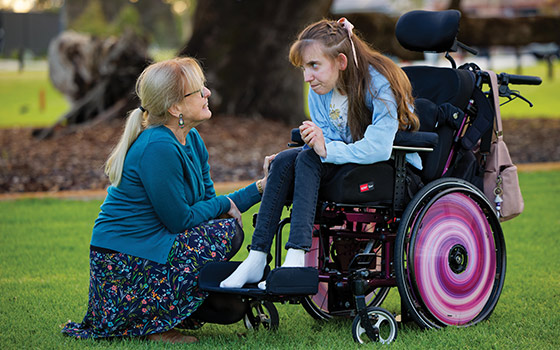Search
Research
Determinants of sleep disturbances in Rett syndrome: Novel findings in relation to genotypePrevalence and determinants of sleep problems in Rett syndrome
Research
Onset of maternal psychiatric disorders after the birth of a child with intellectual disability: A retrospective cohort studyMothers of a child with intellectual disability (ID) have more psychiatric disorders after the birth of their child than other mothers.
Research
Measuring use and cost of health sector and related care in a population of girls and young women with Rett syndromeThis study measured use and cost of health sector and related services in Rett syndrome and effects of socio-demographic, clinical severity and genetic...
Research
Survival with Rett syndrome: comparing Rett's original sample with data from the Australian Rett syndrome DatabaseRett syndrome is a severe neurodevelopmental disorder that typically affects females. Little is known about the natural history and survival time of these femal
Research
Level of purposeful hand function as a marker of clinical severity in Rett syndromeWe investigated relationships between hand function and genotype and aspects of phenotype in Rett syndrome
Research
Valproate and risk of fracture in Rett syndromeThis study investigated the relationships between fracture risk and commonly used AEDs in Rett syndrome.
Research
Early determinants of fractures in Rett syndromeThe goals were to compare the fracture incidence in Rett syndrome with that in the general population and to investigate the impact of genotype, epilepsy,...
Research
Lost in translation: translational interference from a recurrent mutation in exon 1 of MECP2Rett syndrome (RTT) is an X linked neuro-developmental disorder affecting mostly girls. Mutations in the coding region of MECP2 are found in 80% of classic...

The Quality of Life Inventory - Disability
Research
Efficacy of Health Literacy Interventions for Caregivers of Individuals with Neurodevelopmental and Chronic Conditions: A Rapid ReviewCaregivers of individuals with neurodevelopmental and chronic health conditions require health literacy (HL) skills for the long-term management of these conditions. The aim of this rapid review was to investigate the efficacy of HL interventions for these caregivers.
